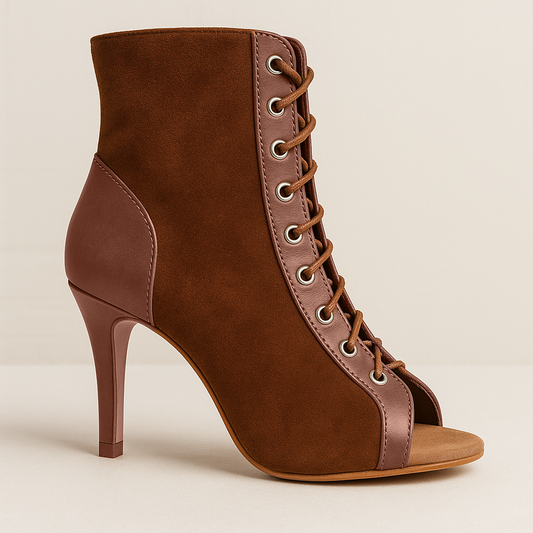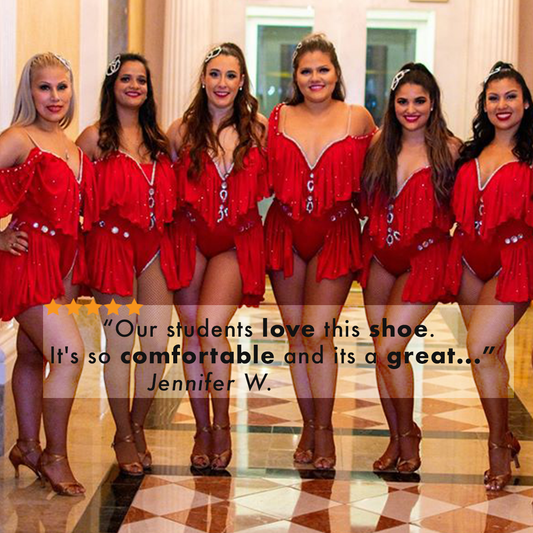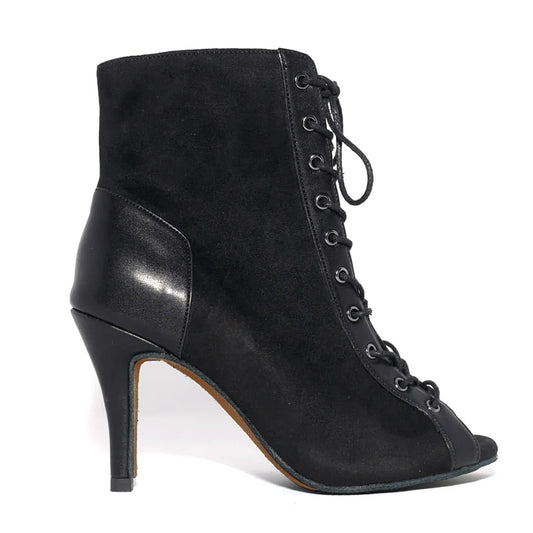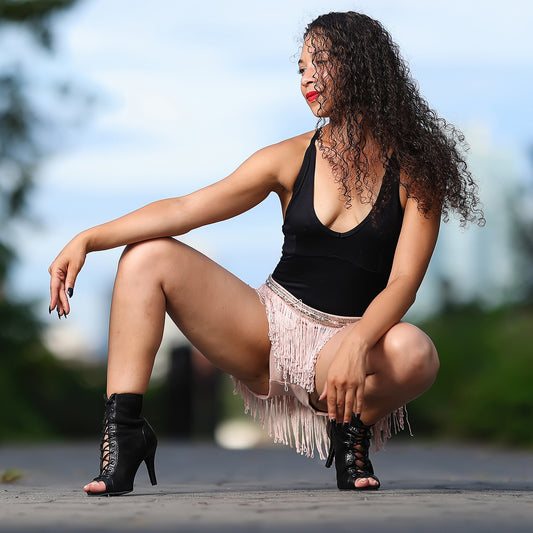
Image of models taken from https://www.bobcutmag.com/stories/diversity-in-modeling-world
Racism - antagonism directed toward a person that belongs to a specific racial or ethnic group, usually a minority or marginalized. This topic is not often discussed in the social and dancesport scenes, unlike sexual harassment, but it happens, and it happens all the time.
The irony is that dance is universal; it’s ingrained in every culture. Latin dance, being one of the most popular dance genres in the world, has its roots in African music. Apart from Latinos and white people, Latin dance is loved by Asians, Black-Americans, etc. In short, Latin music and dance go beyond race, and yet, racism is a thing in salsa and other Latin dance styles.
A Look Back at Latin Dance’s Black Roots
Although Latin dance has gained global popularity, it's often mis-characterized with stereotypes and sweeping generalizations rooted in dated historical perceptions. Salsa, in particular, is often unfairly described using immoral words to make the dance style seem sinful and salacious, promoting promiscuity. The perceptions are based on African stereotypes to justify somehow the oppression of the Africans in Cuba and Puerto Ricans in New York.
Salsa, for example, has its roots in the Cuban slave trade. When the Spaniards immigrated to Cuba, conquistadors enslaved the islands’ inhabitants to boost Spain's labor force in the mines and fields. The slaves were nearly wiped out by the 17th century because of the disease that the conquistadors spread all around. Because of the depleted labor force, Spaniards imported African slaves. Even after countries like the US and UK were no longer receiving many slaves in the 19th century, Cuba's slave trade was peaking.
Slave owners in Cuba were quick to eliminate their slaves’ tribal culture to maintain white dominance. But as more African slaves gained freedom, they formed distinct societies and preserved their traditions and beliefs -- including traditional dances and music.
Although slave owners failed to eliminate their slaves' traditions, values, and culture, they labeled the dances - such as rumba - as licentious or immodest, associating African dances with crimes and rowdy drinking.
Salsa is rooted in Rumba. Traditionally, partners circle each dancer when dancing the rumba, and it's rare for dancers to touch each other's face and body. It's playful; there’s a lot of teasing but hardly any touching. On the other hand, Salsa is danced in a closed position; the dancers hold each other's hands and shoulders, similar to Danzón, Cuba’s first national dance.
As Europeans made their way to the island, the dances became bolder; hip moves sinuously. As Afro-Cubans became immersed in European culture, they started to join dances to gain sexual access to women. People, particularly women, were told not to dance the Danza and danzón because of its African roots. They are told to dance the "more acceptable" dances like European dances. On the other hand, men were warned against Afro-Cuban women who dance a lot of danzónes and Danzas, painting these women as "sexually dangerous" among whites.
By the 1920s, danzon became less popular, and Son was being danced all over the Afro-Cuban communities. This dance style became popular in other Latin American countries, including Puerto Rico, a United States territory. Because Puerto Ricans could go in and out of the US without passports, thousands of Puerto Ricans immigrated to the US, bringing their dance and culture.
By 1992, about 35% of Puerto Ricans live in the US, and most live closely to African Americans. This led to a blended culture of dance and music. Traditional Puerto Rican dances and music started having jazz influences.
Culture Appropriation or Appreciation: Discriminatory Behaviors on the Dance Scene
Despite its popularity within the Puerto Rican and African-American communities, salsa is still misinterpreted as a sexual dance style because of the hip and shoulder movements, just like how rumba, danzón, and son, were perceived as overly sexual in Latin America because of European influences.
And stereotypes stuck until today.
Even if new dance genres emerge, salsa is still perceived as a hip-swinging, pleasure-seeking, hypersexual dance style. Latinos are judged by how they dance and how they are through traditional dances instead of the history of the dance movements and what these movements embody.
Latin dance’s non-white history is often lost on most people. People who are not very knowledgeable about Latin music have no idea about Latin music’s black roots and its history in the African slave trade. Also, people of color who are into Latin dance are often subjected to some form of racism.
Non-Latino dancers who teach or compete in Latin dance often come across subtle forms of racism. There are also some accusations of culture appropriation amongst dancers for trying to “look the part,” i.e., getting a deep tan to look more brown than white, dancing, talking, and behaving a certain way to look more Latina, and so on. Instead of gaining respect for their dance skills, some non-Latino dancers are questioned for trying to “invade” the industry.
Some people often deny the “Americanness” of Latin dance in the US because it’s not from the US, emphasizing how Latin artists look different, depicting them as "exotic" or foreign even though many of these artists are US citizens. This kind of discriminatory behavior is prevalent in white-dominated industries like American pop music.
The media has painted Latin music as a genre that “crossed-over” or invaded pop music, which paints pop music as exclusively white and perhaps, African-American and that infusing pop music with Latin music is something new even though many Latin artists are US citizens and have lasting contributions to traditional American pop music.
Whites are not exempted from discriminatory behaviors on the social dance scenes. Some are accused of cultural appropriation simply because of the color of their skin. Others are also accused of cultural appropriation for trying to look or behaving a certain way.
Americans associate tacos and tortilla chips with Mexicans the same way they associate Latin music with Ricky Martin and J.Lo. While these artists definitely brought Latin music to the global stage, the rich history of salsa, lambada, mambo, son, bolero, bachata, kizomba, etc., have been diminished to Livin’ La Vida Loca or Papi. These are great songs, but they do a poor job of representing the culture and history of Latin music and dance.
Confronting Racist Behaviors

Photo created by KamranAydinov
Loving salsa, bachata, zouk, kizomba, and other forms of Latin dance should include supporting movements that fight racism in the social and dancesport scene. If you’re not part of the movement for change, you are actively inflicting damage on the traditions and cultures that are rooted in Latin music.
You can avoid racism on the dance floor by honoring the black roots of Latin music and dance. Latin music and dance are often associated with party music, but they are much more than that. Latin music and dance illustrate the blended culture and history of both Latinos and Africans.
Speak Up: Stand up against racism by expressing discomfort or disapproval of a racist comment. Don’t let race be a punchline in any conversation. Some racists would try to pass off an insult as a joke and then cast anyone a "snowflake" for being offended or pointing out that the joke is offensive.
If someone makes a racist comment or joke, let that person know how the comment makes you feel. Don't be triggered because racists would often try to push your button to elicit a reaction, do not give them the satisfaction.
Educate: Don't let bigotry invade the dance floor and ruin the experience by not speaking up. That's not to say you should actively seek out racists on the dance floor and give them a piece of your mind. It’s just a matter of using your voice to educate people about discrimination, regardless if it’s intentional or not, without sounding defensive or aggressive.
It's not always easy to say what's needed to be said in the face of ignorance, but by speaking up and/or supporting those who are speaking against racists, they’ll think twice before letting out an insult. Of course, there those who refuse to hear some truths, and if such is the case, question their fear and ignorance then walk away.
Report it: If you see racially motivated harassment on the dance floor, let the organizers know right away. In most social dance events, they have security in plain clothes surveying the venue all the time. There are also people out front who are keeping an eye out for troublemakers. These are the people you can turn to if you are or someone you know is bothered by some dancers.
Latinos, Asians, and Muslims are often targeted by xenophobic insults. The United States is built on immigration, and in many ways, we're all visitors. Recognize the problem, address it, but do not expect racists to change their minds about you when this happens. But one thing is for sure, don't give someone the power to make you feel like you don't belong in this country.







